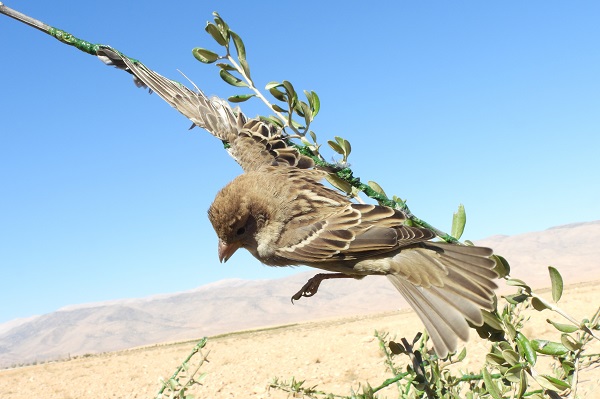Limesticks used for bird trapping.

Despite the general ban, limesticks are the most widespread trapping method in Lebanon, along with mist-nets, for catching songbirds. Branches or twigs are coated with a sticky substance and laid horizontally in a bush or shrub. The birds landing on them become immediately stuck until they are collected by bird trappers hiding nearby. It is not uncommon for electronic decoys or even dead birds themselves to be used to attract more birds. The glue is traditionally made from the pulp of Syrian plums, but today industrial glues are mostly used. Limesticks are used to catch birds all over the Mediterranean, but the main focus is in the East as well as in North Africa. In Lebanon, they are found in the coastal areas as well as in the Bekaa Valley and in the south of the country.
As with bird trapping with nets, warblers are the primary "target species" of bird trappers, although Lebanese hunting law do not allow them to be trapped or shot. Limesticks catch unselectively - any bird that settles on them eventually ends up on a plate or in a cage. Many birds are eaten by the poachers themselves, but in most cases they are sold for around a dollar per bird. In crisis-ridden Lebanon, catching several dozen birds a day can be a lucrative source of income. With some species, such as linnets or goldfinches, also sold as cage birds at markets or on the side of the road, the perpetrators can earn a tidy extra income.






